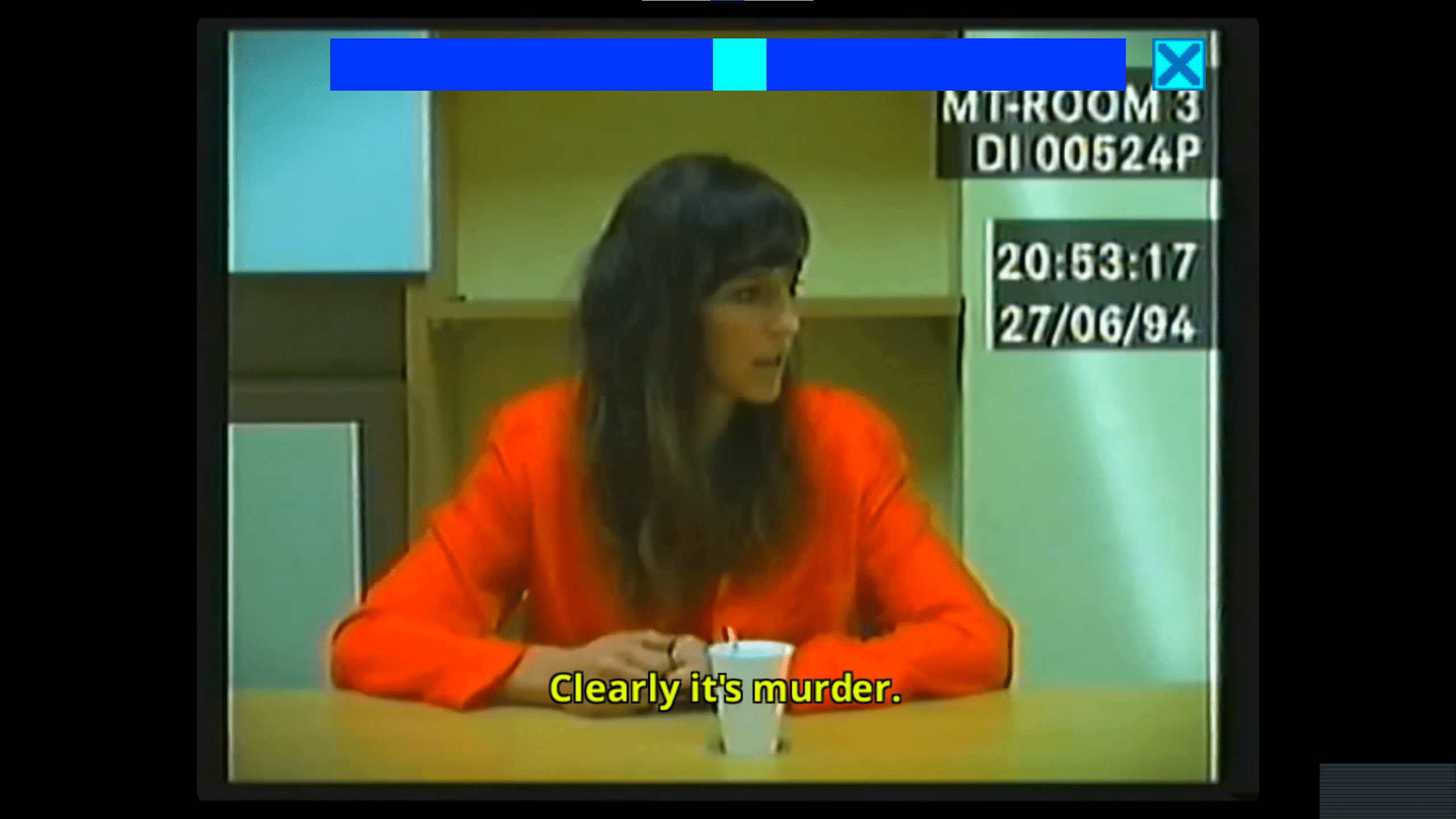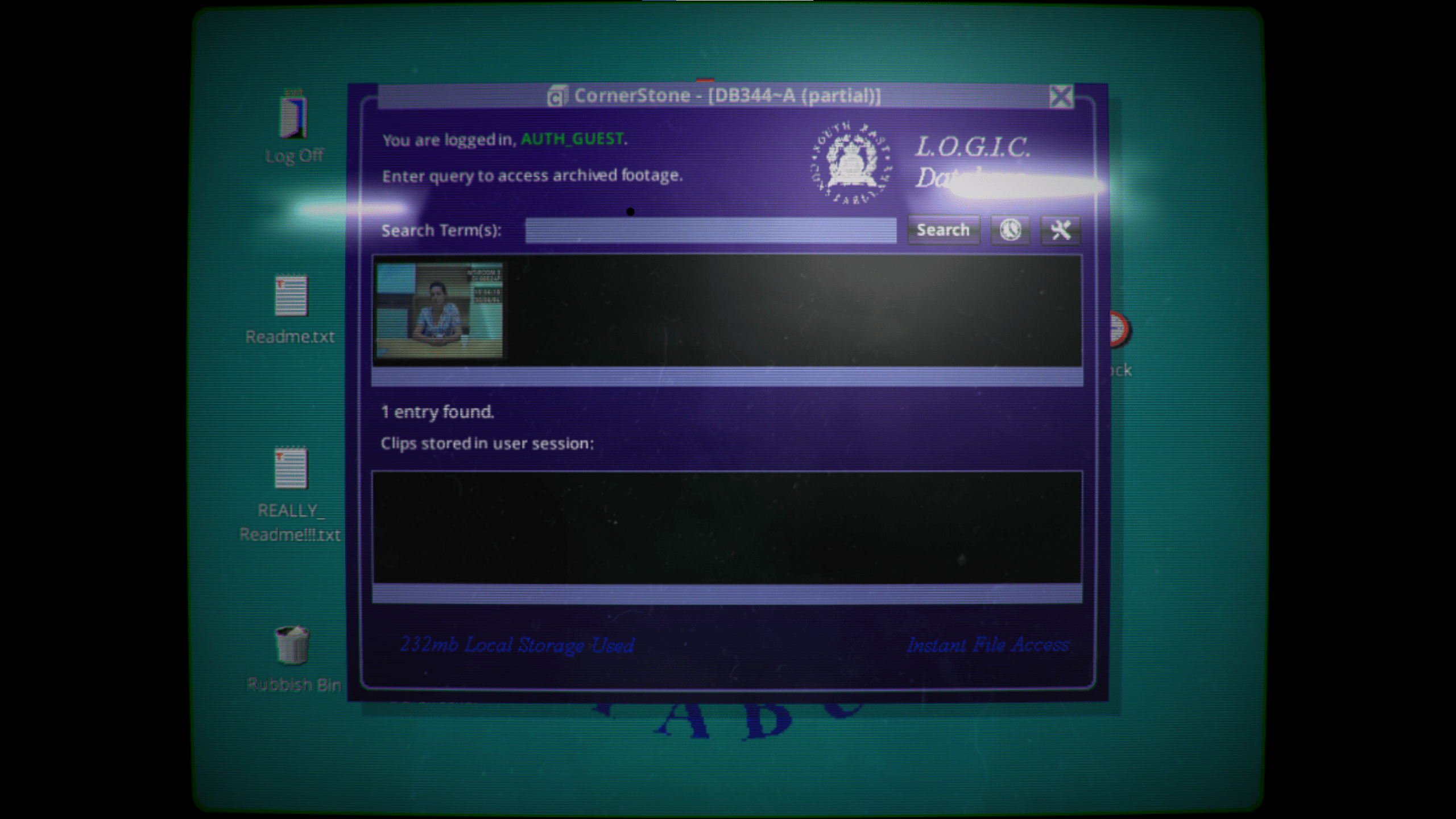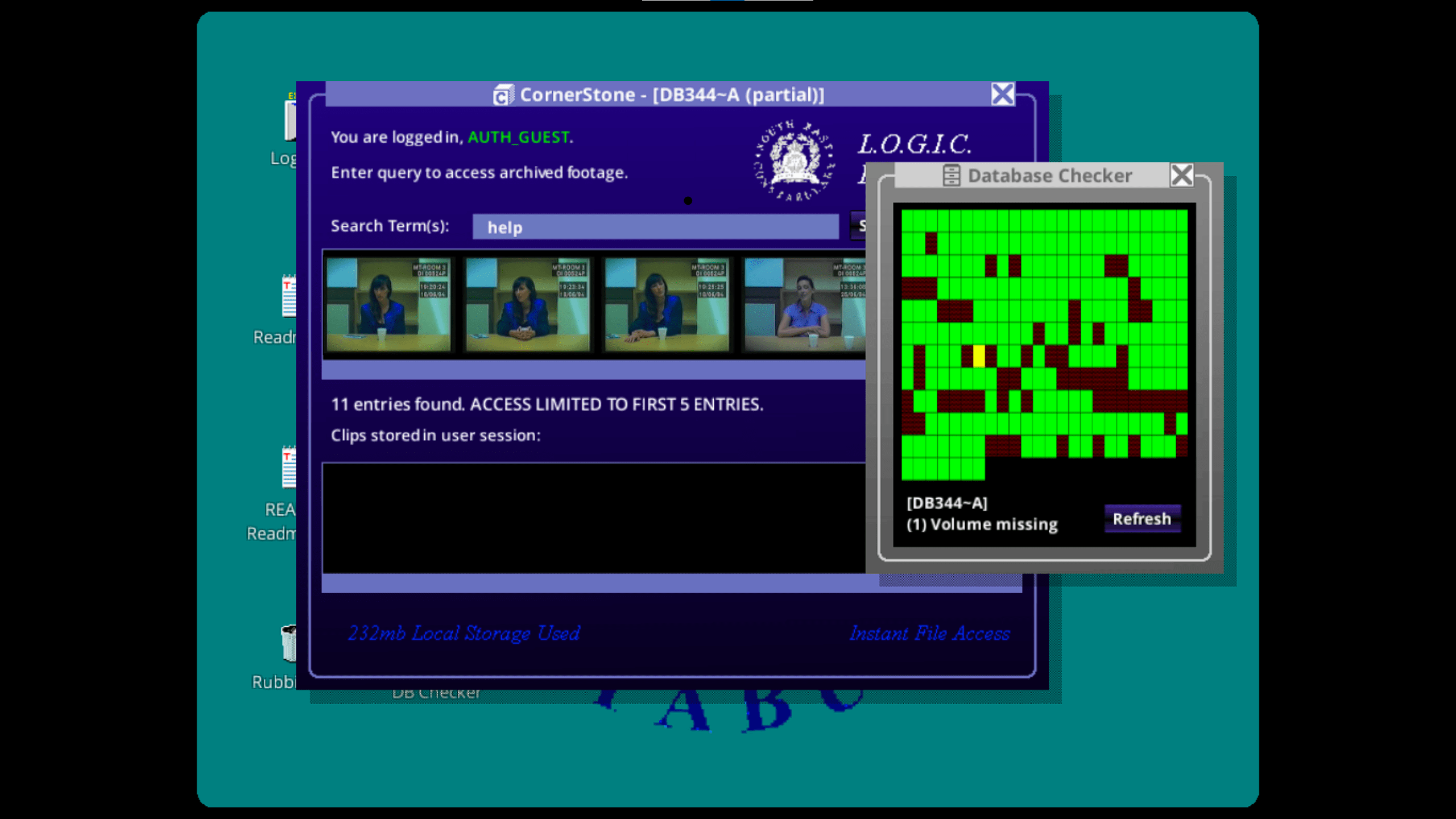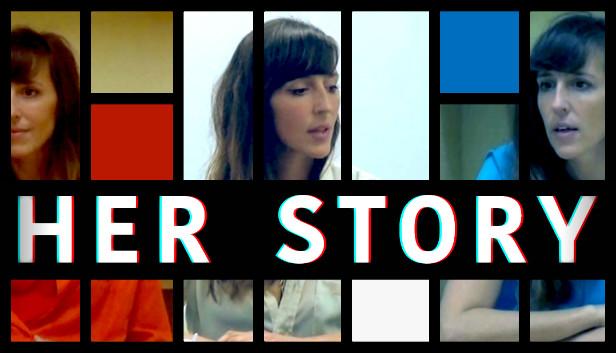Name of Game: Her Story
Developer: Sam Barlow
Platform: Android, iOS, Windows, macOS
Target Audience:
Given that Her Story centers itself around mature themes (like murder), I imagine that the target audience of the game must be older. It would likely be suitable for 16+ years old. The mechanics of the game are incredibly simple, so even those without prior experience in games could quickly understand how to progress. Her Story caters to people who love murder mysteries and are willing to engage with these types of stories through a variety of platforms: shows, podcasts, and games. Conversely, I could see this game being incredibly boring for people who are looking for a fast-paced, twitch-skill game rather than an interesting story. Overall, Her Story offers an enticing experience for adults who are fans of the murder mystery genre but might not have much prior experience with video games.
Formal Elements:
Her Story is a single-player indie puzzle game in which you discover the truth about the murder of a man named Simon by watching clips of police interrogations with a woman named Hannah. The clips range from just a few seconds to a little over a minute in duration. You are able to find different clips of Hannah by searching for keywords in a database. Any clip in which Hannah says the keyword will come up as a result. If there are more than five results, you will only be able to see the first five clips. This encourages players to craft more specific searches as they learn more information. The gameplay loops between searching for keywords and watching any new clips that are found.
The mechanics of Her Story support the mystery through their simplicity. Searching for keywords or phrases helps the player identify important information/events as they sparse through the 271 clips in the game. It allows the player to focus on unraveling parts of the mystery that they are most interested in or that they think is most important. It allows for a very natural exploration of the mystery, in a way that feels true to a real detective. If the mechanics were more involved (like making the player piece together the correct order of events for example), it would put more pressure on the player to unravel the mystery in a rigid manner that prioritizes collecting information rather than the process of discovering information.

Types of Fun:
Given the very limited actions that the player can take, the game heavily relies on narrative to make the game fun. You need to be invested in discovering the truth about Simon and Hannah, or you’d have no reason to keep searching the database whenever you run out of leads. Additionally, the process of constantly trying to find new clips can make the game fun through discovery. The more you progress in the game, the harder it becomes to find clips that you haven’t already seen. It makes it very rewarding when you are able to find a new direction that leads to a new discovery.
Narrative:
I would say that Her Story offers an enacted narrative because the game has little control over the order of how the player witnesses each of the episodic clips. The overall narrative contains a few micro-narratives that the player needs to discover and figure out how to correctly place in the greater timeline of events. The player can technically discover these micro-narratives in any order; however, the game does indirectly encourage the player in certain directions by having Hannah say keywords with slightly more emphasis. This means of narrative emerges from the basic actions of searching for words and watching clips. Moreover, it places more value on exploration (as you are trying to find more pieces of information about the story) than development. It focuses on highlighting a few memorable moments/discoveries for the player.
Moments of Success/Failure:
One thing that I really enjoyed about the game was the atmosphere building through visual design and sound. When I first launched the game, the screen was distorted to make it look as though I was using an old school monitor from the 1990s. I didn’t end up keeping this visual effect enabled because it was a little straining for the eye, but it was nice to have it as the introduction to the vibe of the game. As a side note, I appreciated that I even had the option to disable this visual effect at all because it seems like something that could be easily overlooked! Going back to the visual design, the videos of Hannah were a little fuzzy which further helped convey that the game probably took place when technology was still making its way into the mainstream. As you type words and phrases into the search bar, the sound of typing on an old mechanical keyboard plays in the background. This was one of my favorite details of the game because not only was it very satisfying to hear but it helped immerse me into the role of someone pouring through digital databases.

One thing that I think the game could improve on is giving the player hints when they get stuck. The game gives very little assistance when it comes to figuring out what words you should be searching for. At the start of the game, this really isn’t a problem because you can search for almost anything and get new information; however towards the end of the game, you’ve likely explored most of the obvious routes and can’t figure out what phrases to search to get the last few clips that you’re missing. Personally, I found it really unsatisfying because I wanted to know every snippet of the story but didn’t have any help in getting to the remaining clips. This resulted in me just searching for very common words (like “happy”, “sad”, “like”, “went”, etc.) and hoping to get some new videos by chance. While this method was effective for a while, it didn’t feel like it matched up with the “clever detective” role that I previously had felt at the start of the game. To make the game better, I would add a hint system where players can request a single word from a clip they haven’t seen AFTER they’ve seen at least 50% of the total videos. This forces players to play detective at the start of the game when it is still very easy to do so while also giving players the option to struggle or receive once things get more difficult. Additionally, for quality of life, I would add a simple in-game notepad where players can take notes because it is a little difficult to keep track of all the micro-narratives without writing anything down.




